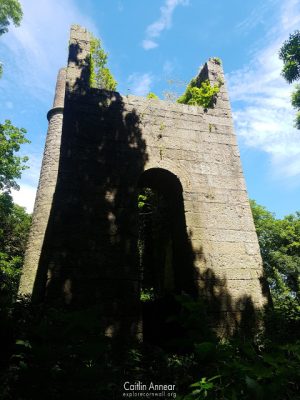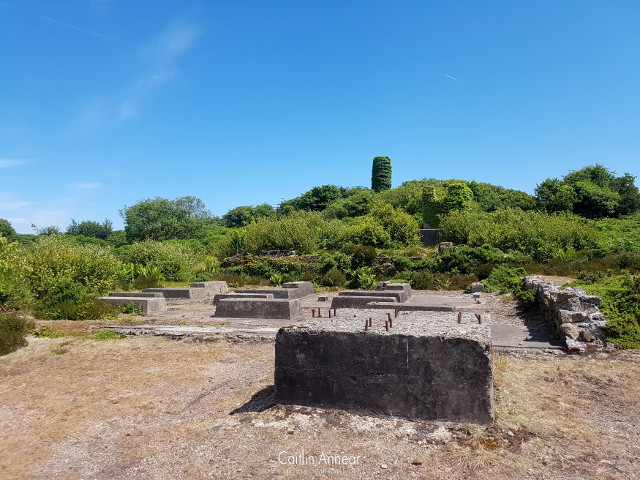Situated on Porkellis Moor lie some of the more modern remains of Basset and Grylls mine. Originally named Porkellis United, it also included the workings of Wheal Cock. Basset and Gryll’s potential was first noticed in 1845 by a Mr Jenkin and co, but as they didn’t own the mineral rights they were soon ousted.

The area had already been heavily worked by ‘old men’ and the ground was notoriously soft, requiring clever timbering. Some of the more shallow levels had patches of tin left over from previous workings, but miners were forbidden from trying to extract. Of course over time these warnings were ignored and eventually the roof of the levels became too weak to hold up a slime pit just above. In August 1858 the ground gave way leaving a 54x36m hole, 9m deep. Six men and one boy died, with several of the surface workers only narrowly escaping.
Following the incident, the pumping engine was moved to where it stands today further up the road towards Porkellis, with attentions turned towards the lodes in that area. This was primarily the Tymorgie lodes, which unfortunately weren’t as profitable as originally thought. In 1859, all of the engines were put up for sale.
By 1864 the mine appeared to have the same engines working on the site: a 60″ pumping engine, a 24″ whim and a 32″ double acting pump and stamps driving 80 heads, as well as a waterwheel driving 20 more. Since the main pumping engine was now in a different area of the sett, the stamps engine was equipped with flat rods.
In 1872 a new 60″ pumping engine was ordered from Harvey & Co, with the Porkellis Moor section of the mine being abandoned at the same time. Focus was turned to the Wheal Cock and Old Men’s section of the sett, with the moor area only used for dressing. At some point the mine was abandoned again.


Tyack’s (80fathoms/146m), Old Men’s (90-fathoms/164m), Collin’s, Eathorne (25-fathoms/45m), Wheal Cock’s (45-fathoms/82m), Gundry’s (60-fathoms/109m), Wilkin’s (22-fathoms/40m), Griggs (40-fathoms/73m), Eastern (61-fathoms/111m), Drigger’s (85-fathoms/155m), Dumping (25-fathoms/45m), Gluya (20-fathoms/36m), Water Wheel (15-fathoms/27m), Pisk’s (15-fathoms/27m), Flat rod (?15-fathoms/27m), Spagoe’s and Crowan Bridge.
The lodes of Basset and Grylls (including Porkellis United and Wheal Cock): Cock, Old Men’s, Tymorgie (North and South), Wilkin, Cope’s, Bennet’s and Garlidna.
1852-80
4,323 tons (4,392,371 kg) of tin
1907-14
327 tons (332,247 kg) of tin

In 1907, the mine was reopened under the name Basset and Grylls and was worked by various different companies up until 1926. Between 1826-29 it was named Jantar before being renamed Porkellis Tin Mines in 1933. The mine was again abandoned for good just before the Second World War.

The Porkellis Moor section of the mine is free to roam, with the modern remains of the crusher and buddles easy to access. The arsenic stack and the A frames are all on private land, as is the Wheal Cock section. Tyack’s engine house is supposed to be free to access, but on my visit was very overgrown and required strategic stinging nettle bashing to get to.
There no official parking for this site.
Brown, K. and Acton, B. (2007) Exploring Cornish Mines: Volume Two. 2nd edn. Truro: Landfall Publications.
Dines, H. G. (1956) The metalliferous mining regions of south-west England. British Geological Survey.
Hamilton-Jenkin, A. K. (1978) Wendron Tin. Falmouth: Century Litho.
Nance, D. and Brown, K. (2014) A complete guide to the engine houses of West Cornwall. Gloucestershire: Lightmoor Press.


